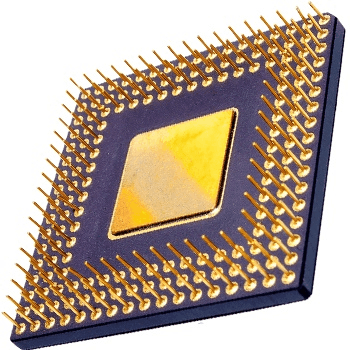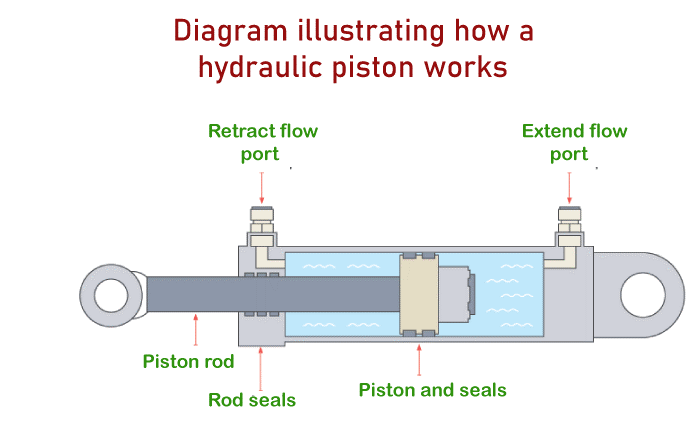What is Accumulator?
The accumulator is a register in a computer's central processing unit (CPU) that is used to store intermediate results of arithmetic and logic operations. It is typically used in the instruction set of a CPU and plays a central role in the execution of many types of instructions.

The accumulator is a general-purpose register, which means that it can be used as an operand for a wide variety of instructions. For example, an instruction might specify that the accumulator should be loaded with a constant value, or that it should be used as one of the operands in an arithmetic or logic operation.
Only the accumulator can be used as a register. Be used as an operand for certain instructions. In other instruction sets, the accumulator is one of several registers that can be used as operands for certain instructions.
Role of an accumulator
The role of an accumulator is to store intermediate results of arithmetic and logic operations and to provide a destination for the results of those operations.
In a central processing unit (CPU), the accumulator is used to perform a wide variety of tasks, including arithmetic operations, logic operations, and data movement.
The accumulator is typically the register that is most often used in a CPU. Many instructions, such as those for arithmetic operations, load or store data to or from the accumulator. The accumulator is also often used to hold the results of a calculation or the data that is being processed.
It is commonly used to hold the result of an arithmetic operation, such as addition or multiplication. The accumulator is a general-purpose register, meaning that it can be used for any instruction that requires an operand.

Here are a few examples of the role of an accumulator in different contexts:
1. In an assembly language program, the accumulator is often used to store the result of an arithmetic or logic operation. For example, an instruction might specify that the result of an addition operation should be stored in the accumulator.
2. In a high-level programming language, the accumulator is often used to store the result of an expression. For example, an expression such as "x + y" might be evaluated by performing the addition operation and storing the result in the accumulator.
3. In a digital circuit, the accumulator is often used to store the intermediate results of a computation. For example, an accumulator might store the intermediate results of an adder or a multiplier.
Overall, the accumulator plays a central role in the operation of a CPU, and it is an essential component of many types of computer systems.
Need for an accumulator in older computing systems:
In older computing systems, the accumulator plays a central role in the operation of the CPU. This was because many of these systems had a relatively small number of general-purpose registers, and the accumulator was often the only register that could be used as an operand for certain instructions.
One of the main reasons for the need for an accumulator in these systems was the limitation on the number of available registers. Using the accumulator as a kind of "scratchpad" for intermediate results, these systems could perform a wide variety of tasks using a relatively small number of registers.
Another reason for the need for an accumulator in older computing systems was the limited complexity of the instruction sets. In these systems, the accumulator was often used as an "all-purpose" register. It might be applied to a wide range of jobs. This made it easier to design the instruction set and to write programs that could run on these systems.
Evolution of accumulators:
The concept of an accumulator has evolved over time, as computer architecture and instruction sets have evolved. Here is a brief overview of the evolution of accumulators:
1. Early computers: In the early days of computing, accumulators were used in many types of computers as a way to store intermediate results of arithmetic and logic operations. These accumulators were often the only registers that could be used as operands for certain instructions, and they played a central role in the operation of the CPU.
2. Von Neumann architecture: The von Neumann architecture, which is the basis for most modern computers, introduced the concept of a general-purpose register that could be used as an operand for a wide variety of instructions. In this architecture, the accumulator was one of several general-purpose registers that could be used as an operand for certain instructions.
3. Reduced instruction set computing (RISC): RISC architectures, developed in the
The 1980s, introduced the concept of a load/store architecture, in which most instructions operated on registers rather than on memory. In these architectures, the accumulator was one of several registers that could be used as operands for certain instructions.
4. Complex instruction set computing (CISC): CISC architectures, which were developed in the 1970s and 1980s, introduced the concept of a variable-length instruction set, in which instructions could have different sizes and perform a wide variety of tasks. In these architectures, the accumulator was often used as a kind of "scratchpad" for intermediate results, and it played a central role in the operation of the CPU.
Types of Accumulators
1) Arithmetic accumulator
An arithmetic accumulator is used to store intermediate results of arithmetic operations, such as addition, subtraction, multiplication, and division. The arithmetic accumulator is typically used in the instruction set of a central processing unit (CPU) to perform these operations.
In some instruction sets, the arithmetic accumulator is the only register that can be used as an operand for certain arithmetic instructions. For example, an instruction might specify that the result of an addition operation should be stored in the accumulator. In other instruction sets, the arithmetic accumulator is one of several registers that can be used as operands for certain arithmetic instructions.
2) Logic accumulator
A logic accumulator is a type of accumulator that is used to store intermediate results of logic operations, such as AND, OR, and XOR. The logic accumulator is typically used in the instruction set of a central processing unit (CPU) to perform these operations.
In some instruction sets, the logic accumulator is the only register that can be used as an operand for certain logic instructions. For example, an instruction might specify that the result of an AND operation should be stored in the accumulator. In other instruction sets, the logic accumulator is one of several registers that can be used as operands for certain logic instructions.
3) Floating-point accumulator
A floating-point accumulator is a type of accumulator that is used to store intermediate results of floating-point arithmetic operations, such as addition, subtraction, multiplication, and division. The floating-point accumulator is typically used in the instruction set of a central processing unit (CPU) to perform these operations.
In some instruction sets, the floating-point accumulator is the only register that can be used as an operand for certain floating-point instructions. For example, an instruction might specify that the result of a floating-point addition operation should be stored in the accumulator. In other instruction sets, the floating-point accumulator is one of several registers that can be used as operands for certain floating-point instructions.
The floating-point accumulator is an essential component of many types of computer systems, and it plays a central role in the execution of floating-point instructions. It is often used to store the intermediate results of floating-point operations, and to provide a destination for the results of those operations.
4) Vector accumulator
A vector accumulator is a type of accumulator that is used to store intermediate results of vector operations, such as dot products, cross products, and matrix-vector multiplications. The vector accumulator is typically used in the instruction set of a central processing unit (CPU) to perform these operations.
In some instruction sets, the vector accumulator is the only register that can be used as an operand for certain vector instructions. For example, an instruction might specify that the result of a dot product operation should be stored in the accumulator. In other instruction sets, the vector accumulator is one of several registers that can be used as operands for certain vector instructions.
The vector accumulator is an essential component of many types of computer systems, and it plays a central role in the execution of vector instructions. It is often used to store the intermediate results of vector operations, and to provide a destination for the results of those operations.
5) Mask accumulator
A mask accumulator is a type of accumulator that is used to store intermediate results of mask operations, such as masking, shifting, and rotating. The mask accumulator is typically used in the instruction set of a central processing unit (CPU) to perform these operations.
In some instruction sets, the mask accumulator is the only register that can be used as an operand for certain mask instructions. For example, an instruction might specify that the result of a masking operation should be stored in the accumulator. In other instruction sets, the mask accumulator is one of several registers that can be used as operands for certain mask instructions.
The mask accumulator is an essential component of many types of computer systems, and it plays a central role in the execution of mask instructions. It is often used to store the intermediate results of mask operations, and to provide a destination for the results of those operations.
6) Shift accumulator
A shift accumulator is a type of accumulator that is used to store intermediate results of shift operations, such as left shift and right shift. The shift accumulator is typically used in the instruction set of a central processing unit (CPU) to perform these operations.
A shift accumulator is a type of accumulator that is used to store intermediate results of shift operations, such as left shift and right shift. The shift accumulator is typically used in the instruction set of a central processing unit (CPU) to perform these operations.
The shift accumulator is an essential component of many types of computer systems, and it plays a central role in the execution of shift instructions. It is often used to store the intermediate results of shift operations, and to provide a destination for the results of those operations.
Accumulator in non-computing applications:
An accumulator is a type of register that is used to store intermediate results of arithmetic and logic operations, and to provide a destination for the results of those operations. While accumulators are primarily used in computing applications, they have also been used in a variety of non-computing applications.
Here are a few instances of accumulators in non-computing applications:
1. Automatic transmission systems: Accumulators are used in automatic transmission systems to store hydraulic fluid under pressure, which is used to actuate the gears and other components of the transmission.
2. Industrial control systems: Accumulators are used in industrial control systems to store compressed air or other gases, which can be used to power pneumatic control systems.
3. Power generation systems: Accumulators are used in power generation systems to store energy, which can be used to smooth out fluctuations in the power output of a generator or to offer standby power in case of a failure.
4. Medical devices: Accumulators are used in medical devices such as defibrillators and ventilators to store electrical energy, which can be used to deliver a shock or power the device.
Overall, accumulators have a wide range of uses in non-computing applications, and they are an essential component of many types of systems.
Hydraulic accumulators:
Hydraulic accumulators are devices that store energy in the form of pressurized fluid. They are commonly used in hydraulic systems to smooth out the flow of fluid, increase system efficiency, and provide a reserve of energy that can be used during peak demand.

Hydraulic accumulators can be used in a variety of industries, including construction, manufacturing, agriculture, and transportation. They are an essential component of many hydraulic systems and are used to store energy, absorb shock, and improve system performance.
How a hydraulic accumulator works?
A hydraulic accumulator is a device that stores energy in the form of pressurized fluid. It consists of a pressure vessel, a piston or bladder to separate the gas and fluid inside the accumulator, and a means of charging the accumulator with gas (usually nitrogen).
When the accumulator is charged with gas, the gas is pressurized inside the pressure vessel. When fluid is introduced into the accumulator, it pushes against the piston or bladder, compressing the gas inside. The compressed gas then exerts an opposing force on the fluid, causing it to be pressurized.
The pressurized fluid can then be used to power hydraulic systems or to provide a reserve of energy that can be used during peak demand. When the fluid is used, the gas inside the accumulator expands, allowing more fluid to be drawn into the accumulator. This process can be repeated as needed, providing a continuous supply of pressurized fluid.
Hydraulic accumulators are an essential component of many hydraulic systems and are used to store energy, absorb shock, and improve system performance. They are frequently utilized in several sectors, including industry, transportation, agriculture, and construction.
Types of Hydraulic accumulators:
There are several types of hydraulic accumulators.
1. Bladder accumulators: Bladder accumulators are a type of hydraulic accumulator that use a flexible bladder to separate the gas and fluid inside the accumulator. The bladder is made of a rubber or polymer material and is placed inside a pressure vessel. When fluid enters the accumulator, it pushes against the bladder, compressing the gas inside.
2. Diaphragm accumulators: Diaphragm accumulators are similar to bladder accumulators, but they use a flexible diaphragm instead of a bladder to separate the gas and fluid inside the accumulator. The diaphragm is made of a rubber or polymer material and is placed inside a pressure vessel. When fluid enters the accumulator, it pushes against the diaphragm, compressing the gas inside.
3. Piston accumulators: Piston accumulators are a type of hydraulic accumulator that use a piston to separate the gas and fluid inside the accumulator. The piston is placed inside a pressure vessel and is connected to a spring or a weighted balance. When fluid enters the accumulator, it pushes against the piston, compressing the gas inside.
4. Spiral wound accumulators: Spiral wound accumulators are a type of hydraulic accumulator that use a spiral wound tube of metal or composite material to separate the gas and fluid inside the accumulator. The spiral wound tube is placed inside a pressure vessel and is connected to a spring or a weighted balance. When fluid enters the accumulator, it pushes against the spiral wound tube, compressing the gas inside.
5. Thermal Accumulator: Thermal accumulators are a type of hydraulic accumulator that use a heat exchanger to store energy in the form of hot or cold fluid. Thermal accumulators are typically used in heating, ventilation, and air conditioning (HVAC) systems to smooth out fluctuations in demand and improve energy efficiency.